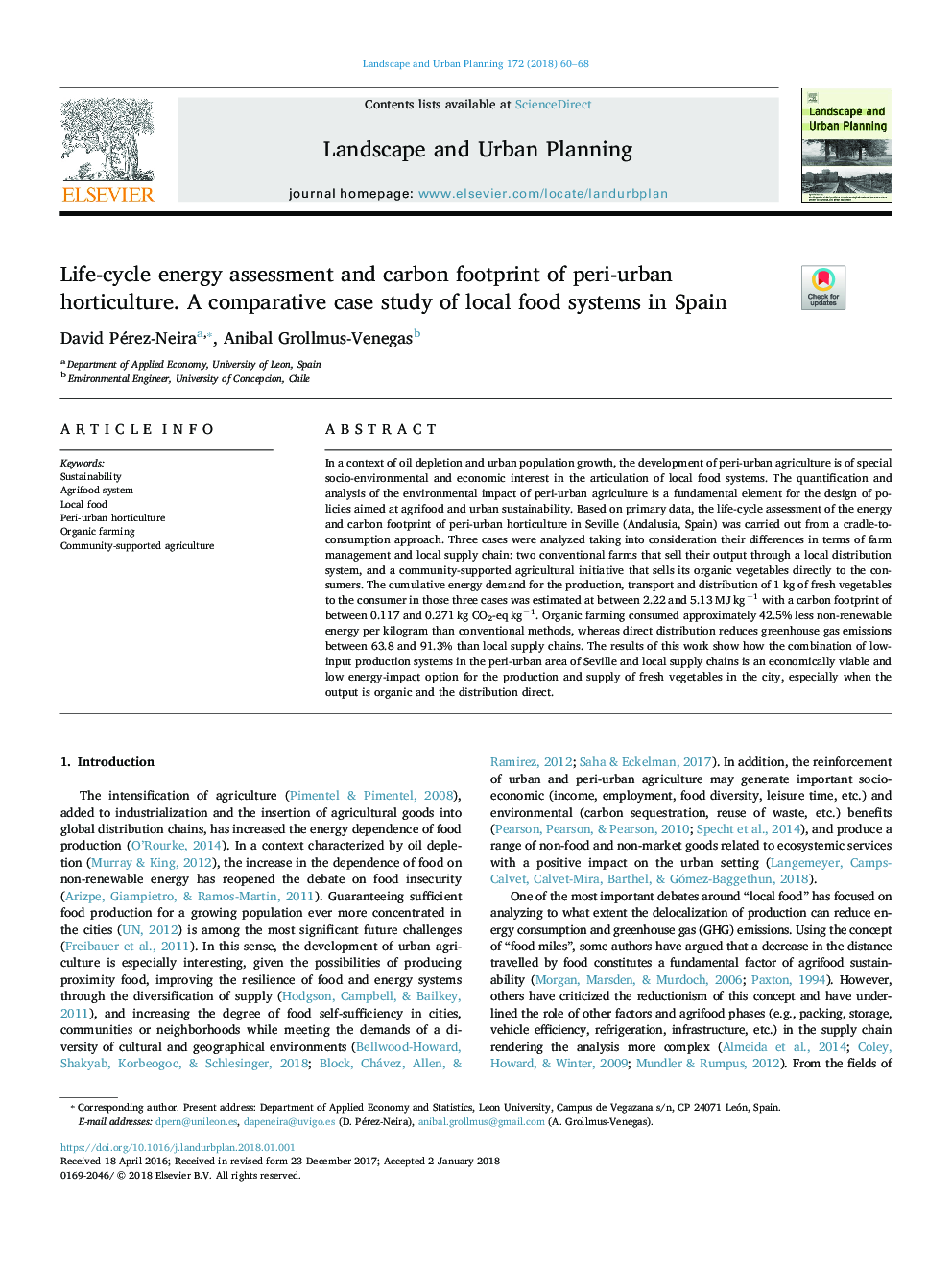| Article ID | Journal | Published Year | Pages | File Type |
|---|---|---|---|---|
| 7459884 | Landscape and Urban Planning | 2018 | 9 Pages |
Abstract
In a context of oil depletion and urban population growth, the development of peri-urban agriculture is of special socio-environmental and economic interest in the articulation of local food systems. The quantification and analysis of the environmental impact of peri-urban agriculture is a fundamental element for the design of policies aimed at agrifood and urban sustainability. Based on primary data, the life-cycle assessment of the energy and carbon footprint of peri-urban horticulture in Seville (Andalusia, Spain) was carried out from a cradle-to-consumption approach. Three cases were analyzed taking into consideration their differences in terms of farm management and local supply chain: two conventional farms that sell their output through a local distribution system, and a community-supported agricultural initiative that sells its organic vegetables directly to the consumers. The cumulative energy demand for the production, transport and distribution of 1â¯kg of fresh vegetables to the consumer in those three cases was estimated at between 2.22 and 5.13â¯MJâ¯kgâ1 with a carbon footprint of between 0.117 and 0.271â¯kg CO2-eqâ¯kgâ1. Organic farming consumed approximately 42.5% less non-renewable energy per kilogram than conventional methods, whereas direct distribution reduces greenhouse gas emissions between 63.8 and 91.3% than local supply chains. The results of this work show how the combination of low-input production systems in the peri-urban area of Seville and local supply chains is an economically viable and low energy-impact option for the production and supply of fresh vegetables in the city, especially when the output is organic and the distribution direct.
Related Topics
Life Sciences
Agricultural and Biological Sciences
Ecology, Evolution, Behavior and Systematics
Authors
David Pérez-Neira, Anibal Grollmus-Venegas,
